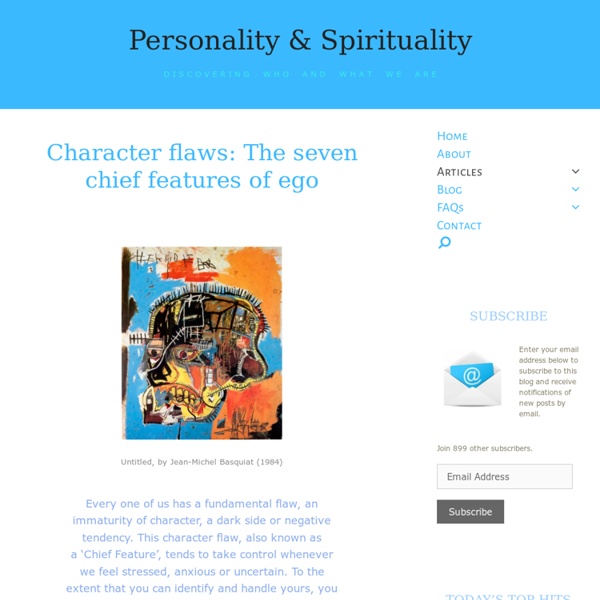Character flaws: The seven chief features of ego - Personality & Spirituality

Metaperceptions: How Do You See Yourself?
Konstantin Sutyagin/Shutterstock I gave a toast at my best friend's wedding last summer, a speech I carefully crafted and practiced delivering. And it went well: The bride and groom beamed; the guests paid attention and reacted in the right spots; a waiter gave me a thumbs-up. I was relieved and pleased with myself. While many profess not to care what others think, we are, in the end, creatures who want and need to fit into a social universe. The ability to intuit how people see us is what enables us to authentically connect to others and to reap the deep satisfaction that comes with those ties. The bottom line: It comes down to what you think about yourself Your ideas about what others think of you hinge on your self-concept—your own beliefs about who you are. Our self-concept is fundamentally shaped by one person in particular: Mama. As an infant scans his mother's face he absorbs clues to who he is; as adults we continue to search for our reflections in others' eyes. Context is key
Scientist studies emotion in psychology, art and acting to help autistics
Stanford Report, March 25, 2010 Stanford researcher David Wilkins is comparing how artists, actors and psychologists know facial emotions. He hopes to use his findings to help individuals with autism, who often are very poor at recognizing facial emotions. By Christine Blackman When actors such as Katharine Hepburn express facial emotions, 'they capture something that we find significant and that captivates us,' researcher David Wilkins said. Sometimes our deepest emotions are written all over our faces. Stanford researcher David Wilkins is studying how people can be trained to better recognize facial emotions. His findings will be integrated in an interactive learning environment to train people with autism to better recognize facial emotions. Wilkins, a lecturer in Stanford's Symbolic Systems Program, is focusing on the seven universal emotions: happiness, sadness, anger, surprise, fear, disgust and contempt. Facing the facts Good actors subtly and accurately portray authentic emotions.
Related:
Related:



